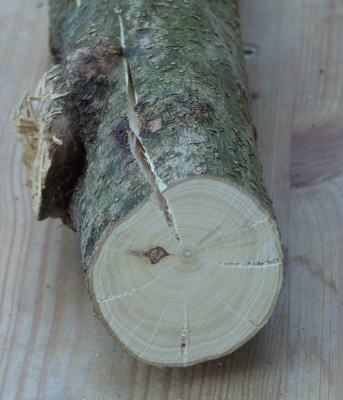Hawthorn is distinguished in: Hawthorn, Quickthorn or Whitethorn (Crataegus monogyna orCrataegus laevigata Dc.). To distunguish the wood of these two species is difficult and is therefore described as one.
It is a very hard wood. In earlier times it was often used for tools and for carvings and was valued for its hardness, toughness and elasticity.
Today it is no longer common. Perhaps because his growth is often irregular. Sometimes it is still used for making bows. Due to the small trunk thickness you get usually only small parts of this wood.
Due to the small trunk thickness you get usually only small parts of this wood.
Previously, the wood was cut in the fall and then it has been put in the hay during the winter. In the spring you could use it, it has had a fine consistency.
The wood is tough, very hard and very weather resistant, but it is very difficult to split. It has extremely fine pores and it is smooth. After a fine finish, it feels a little matt.
It is important that the timber is sealed after processing or treatment, otherwise it tends to become dirty very easily .
It is also important to dry the wood and slowly it to seal the end grain before drying, as it greatly shrinks and tends to crack.
A particularly nice effect can be achieved apparently, if you soaked the dry wood with linseed oil. The wood then takes on shades ranging from yellow and dark honey color.



